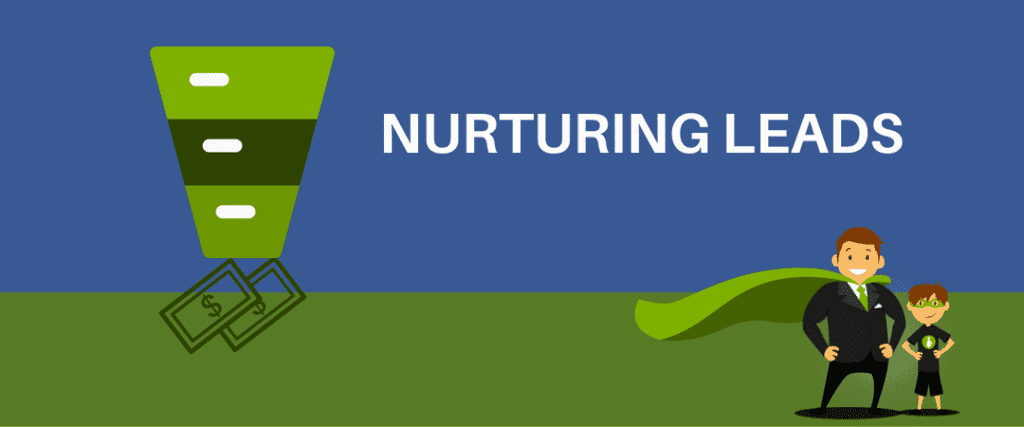I admit I am drawn to the inbound idea of marketing. I mean, who wouldn’t be? The idea that you create some great content, connect with people online, get them to your website and convert readers into leads is a pretty enticing prospect. And, certainly, it works really well for many companies, especially Software-as-a-Service companies.
The idea of Inbound Marketing comes from the change in how customers make decisions towards buying. This is particularly true in the business to business market, but you see it in business to consumer more than before.
It is the contrast of Interruption Marketing versus Permission Marketing. Seth Godin talked about Permission Marketing in this blog in 2008. He literally wrote the book (not an affiliate link) in 1999. Permission is the crux of doing marketing online.
There are tons of ways to nurture leads. The various methods are not the issue. To find something that works for you, we have to determine the best principles for nurturing leads. Everything else is a tactic.
For the purpose article, we are talking about organic leads after the acquisition stage. In other words, these are leads that are already in your sales funnel.

Fundamentals of Lead Nurturing
Here, we are going to discuss three fundamentals of nurturing leads. To master the fundamentals of nurturing leads you need a workflow, good communication, and client relationship management.
Build your workflow
We call them funnels, but in reality, they are a workflow, a system. Your system needs to be flexible enough to nurture a relationship.
Depending on who you read, a traditional sales funnel looks different. First, we have the AIDA which is: Awareness, Interest, Desire, Action. Another writer lays out the sales funnel like this: Awareness, Opinion, Consideration, Preference, and Purchase. Finally, another source structures it this way: Awareness, Consideration, Evaluation, and Purchase.
With the inbound era, it tends to look a little different.
Impulse Creative has an excellent page that breaks down the idea of funnels. The divide them into ToFu (Top of the Funnel), MoFu (Middle of the Funnel), and BoFu (Bottom of the Funnel).
They explain more here about how it helps with content,
The inbound marketing funnel works much like the sales funnel of yesterday, but with one key difference. It tells us, as marketers, what exactly your marketing message should be saying when. Our inbound strategy is built on this funnel and it’s served us and our clients well.
The Inbound Methodology is a great way to explain how the funnel works with customers. The Inbound Methodology includes: Attract, Convert, Close Delight. The idea is, while users are on your website, go from Strangers to Visitors, to Leads to Customers, and finally to Promoters.
I touched on the ACT Methodology for online marketing by Shama Hyder in an article a couple of years ago. She outlines it in her book The Zen of Social Media Marketing: An Easier Way to Build Credibility, Generate Buzz, and Increase Revenue. In the ACT Methodology, A stands for Attract, C stands for Convert, and T stands for Transform.

I think that the most important thing about these methods is that they outline the process a customer goes from beginning to end. Within that, you can see how you can use content to nurture them to customers.
Map out your customer’s journey. How do customers get to the stage of purchasing for you? Do they come through referrals or your website? Do they come from a marketing campaign? Do they convert from your email list?
Need help mapping your journey? Here is an excellent article from veteran copywriter Jennifer Havice at ConversionXL.
Determine the path for most of your customers even though it may not be true for all your customers.
Use that to build your own funnel. You can use one of the funnel methods mentioned above to help give you guideposts. Once you see how your customers come, then you can focus on the areas where they are in your funnel and how you can nurture those leads.
Communication
The core of any relationship is communication. The foundation of any community is communication. When you are nurturing a lead, you are building a relationship and creating a community. Therefore, it stands to reason that you need to communicate with your leads.
Isaac Moche says it like his for a Hubspot article on Medium,
It’s a bit like dating. You have to establish a relationship by building trust. Unless it’s love at first sight, most people don’t get married on the first date. The same goes for your leads. They probably aren’t going to become customers right after subscribing to your blog. In fact, studies have shown that 73% of all B2B leads are not sales-ready. Rather than letting those leads sit around, lead nurturing is a way for your business to educate these prospects, build trust, and help them along their path to purchase.
Let me re-frame this a bit to include that your relationships are both individual and communal. You are building a community as a company.
Communication goes both ways too. One of the best ways to know what your audience wants to hear about it is to ask them. That’s pretty easy to do when you can send a survey through your email list to your audience.
David Masters outlines three ways to survey your customers at EvantoTuts+. First, he mentions “The One Question Survey.” The give an example of three questions to ask. Next, he mentions “The In-Depth Survey.” This type of survey asks more questions that are open-ended and provides for more feedback. Finally, he mentions “The Poll.” A poll allows readers to choose from a few topics and present data in a chart.

CRM
CRM, as you know, stands for Client Relationship Management. It represents a need. What we usually do is get a Client Relationship Management software such as Salesforce or Insightly. Really, there are dozens, maybe hundreds, of CRM tools on the market. Hubspot even has a free one that any small business can use. Zoho has one in its software suite. There is no shortage of tools to use.
Many of these tools are Software-as-a-Service products while others are self-hosted.
The particular tool is not as important as having a system in place. CRM software can become expensive, but there are many available with a reasonable price range for small web agencies. Some cater to small agencies and freelancers.
If there is one drawback to using a tool, it is learning how the software works. Another drawback for me is learning the lingo which is being used (sales pipeline, what?). Ultimately, you will need to test the software to know if it works for you. There are so many variables to consider when choosing a CRM tool.
Remember, the goal of using a CRM is to maintain and grow the relationship you have with your customer and leads.
Wrapping it up
The most important thing you can do to nurture leads is to remember there is another person on the other side of the relationship. That’s not easy sometimes. Tools and automation are great, but if they cover over the relationship, you aren’t doing yourself any favors.
Start with the fundamentals. Create your workflow, maintain and build communication, and use a system or CRM to handle follow-ups and milestones.







